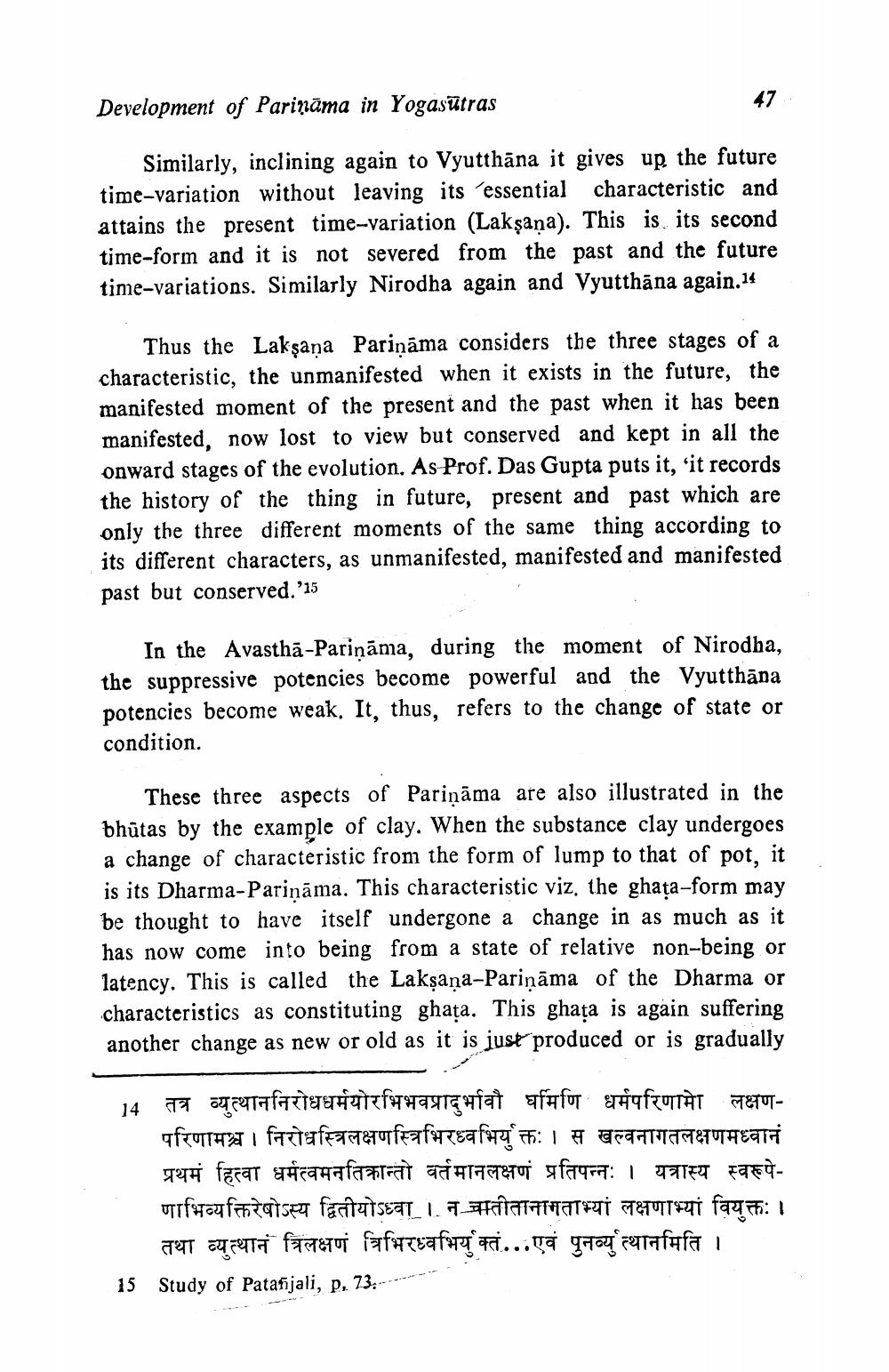________________
Development of Pariņāma in Yogasūtras
Similarly, inclining again to Vyutthāna it gives up the future time-variation without leaving its essential characteristic and attains the present time-variation (Lakşaņa). This is its second time-form and it is not severed from the past and the future time-variations. Similarly Nirodha again and Vyutthāna again.14
Thus the Laksana Parināma considers the three stages of a characteristic, the unmanifested when it exists in the future, the manifested moment of the present and the past when it has been manifested, now lost to view but conserved and kept in all the onward stages of the evolution. As Prof. Das Gupta puts it, 'it records the history of the thing in future, present and past which are only the three different moments of the same thing according to its different characters, as unmanifested, manifested and manifested past but conserved.'15
In the Avasthā-Pariņāma, during the moment of Nirodha, the suppressive potencies become powerful and the Vyutthāna potencies become weak. It, thus, refers to the change of state or condition.
These three aspects of Pariņāma are also illustrated in the bhūtas by the example of clay. When the substance clay undergoes a change of characteristic from the form of lump to that of pot, it is its Dharma-Pariņāma. This characteristic viz. the ghata-form may be thought to have itself undergone a change in as much as it has now come into being from a state of relative non-being or latency. This is called the Lakşaņa-Pariņāma of the Dharma or characteristics as constituting ghața. This ghața is again suffering another change as new or old as it is just produced or is gradually
14 तत्र व्युत्थाननिरोधधर्मयोरभिभवप्रादुर्भावौ घर्मिणि धर्मपरिणामा लक्षण
परिणामश्च । निरोधस्त्रिलक्षणस्त्रिभिरध्वभिर्युक्तः । स खल्वनागतलक्षणमध्वानं प्रथमं हित्वा धर्मत्वमनतिक्रान्तो वर्तमानलक्षणं प्रतिपन्नः । यत्रास्य स्वरूपेणाभिव्यक्तिरेषोऽस्य द्वितीयोऽध्वा । न चातीतानागताभ्यां लक्षणाभ्यां वियुक्तः ।
तथा व्युत्थानं त्रिलक्षणं त्रिभिरध्वभिर्युक्तं...एवं पुनव्युत्थानमिति । 15 Study of Patafijali, p. 73...---




